Zaha Hadid Architects reveal Eco Park Stadium, the world’s first all-timber football venue in Stroud, UK. Combining sustainability and cutting-edge design, the stadium sets a new benchmark for eco-friendly sports facilities.
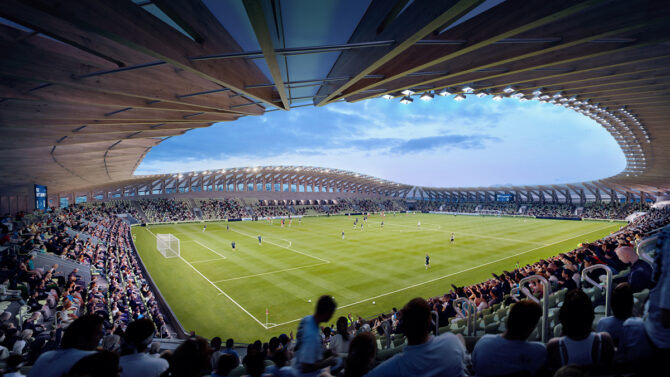
Zaha Hadid Architects (ZHA), renowned for redefining architectural boundaries, have revealed their visionary design for the Forest Green Rovers’ Eco Park Stadium in Stroud, United Kingdom. What sets this project apart is its pioneering use of timber – the stadium is the first in the world to be built entirely from sustainably sourced timber, from its framework to the cantilevered roof and exterior cladding. This groundbreaking concept blends environmental consciousness with architectural innovation, marking a transformative milestone for sustainable sports infrastructure.
A Stadium Rooted in Sustainability
The Eco Park Stadium reflects Forest Green Rovers’ commitment to eco-friendly initiatives. Known as the ‘greenest football club in the world’, Forest Green Rovers has consistently led the way in sustainable sports practices, becoming the first football club certified as carbon neutral by the United Nations. ZHA’s timber stadium amplifies this mission, as timber is not only renewable but also significantly reduces the carbon footprint when compared to traditional materials like concrete or steel.
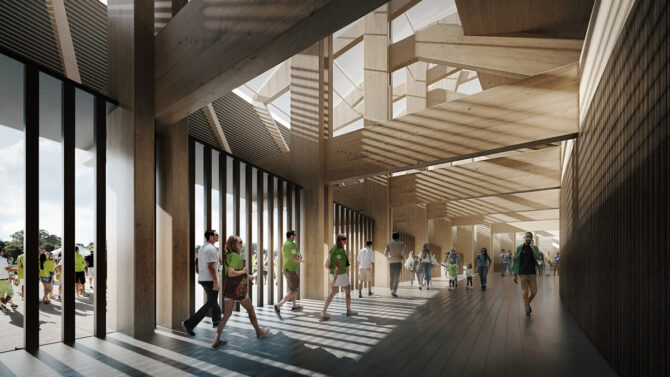
The stadium’s core structural components, including roof cantilevers and stands, are crafted entirely from sustainably sourced timber. This choice aligns with modern environmental standards while ensuring durability and strength. The use of a lightweight, transparent roof membrane minimizes shadow impact, promoting healthy grass growth for the pitch and seamlessly integrating the structure into its natural surroundings.
Innovative Design and Spectator Experience
Functionality and fan experience are central to the stadium’s design. ZHA’s architects have created a close and immersive atmosphere where spectators are positioned as near as possible to the action. Seating is meticulously arranged to provide unobstructed views of the pitch, enhancing the energy and excitement of matchdays.
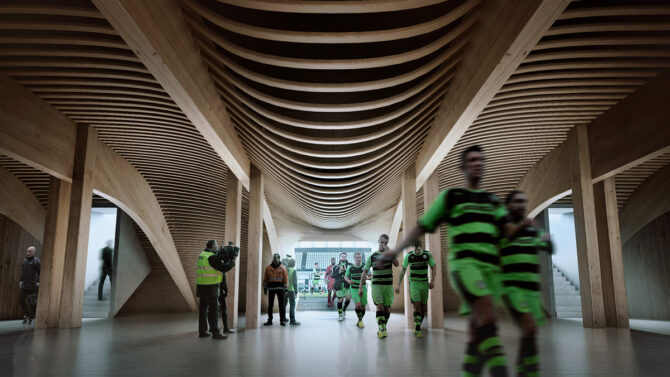
The Eco Park Stadium is also designed with scalability in mind. Initially capable of accommodating 5,000 spectators, the stadium has been engineered for future expansion to a capacity of 10,000 without requiring significant alterations. This forward-thinking approach ensures that the venue can meet growing demands while minimizing future construction waste.
Integrating with the Community and Landscape
The Eco Park Stadium forms part of a larger, eco-friendly development designed to benefit both the football club and the wider community. In addition to the stadium, the project includes facilities such as green spaces, local recreational areas, and infrastructure to promote sustainable living.
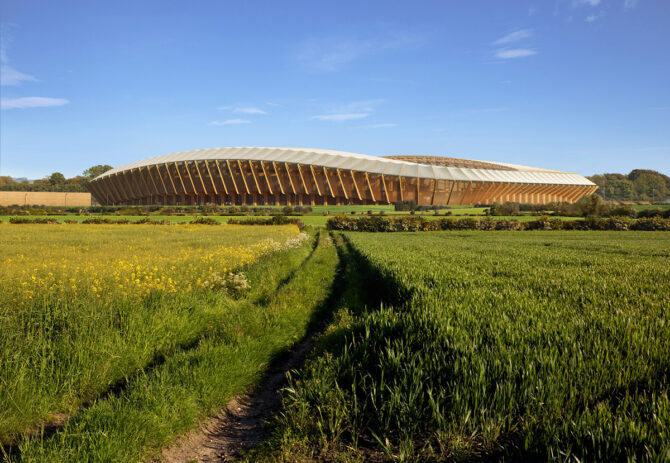
The design emphasizes harmony with the surrounding landscape, a principle often overlooked in large-scale sports venues. The stadium’s transparent roof and natural material palette reduce its visual impact, allowing it to blend into the green fields of Stroud effortlessly.
Pioneering the Future of Stadium Design
Zaha Hadid Architects’ Eco Park Stadium represents a significant leap forward in sustainable architecture. By integrating innovative design techniques with advanced material research, the project challenges conventional norms and sets a new benchmark for environmentally responsible sports infrastructure.
The timber structure not only highlights the viability of renewable resources in major construction projects but also inspires future architects and developers to prioritize sustainability. As cities and sports organizations around the world face increasing pressure to adopt eco-friendly practices, ZHA’s design offers a tangible and scalable solution.
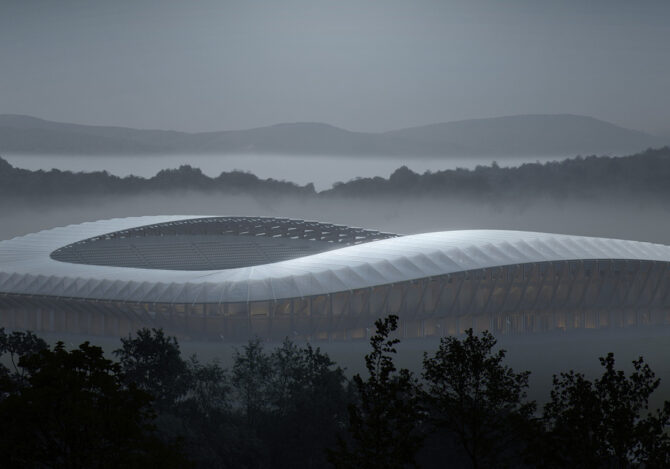
The unveiling of the Eco Park Stadium is a testament to Zaha Hadid Architects’ ability to combine aesthetic brilliance with environmental stewardship. More than just a football venue, the stadium is a symbol of innovation, sustainability, and progress in sports architecture. As Forest Green Rovers continues to champion eco-conscious values, this stadium stands as a beacon for the future of green construction.
Do you think all future sports venues should prioritize sustainability like the Eco Park Stadium? How could other clubs incorporate similar eco-friendly designs?
